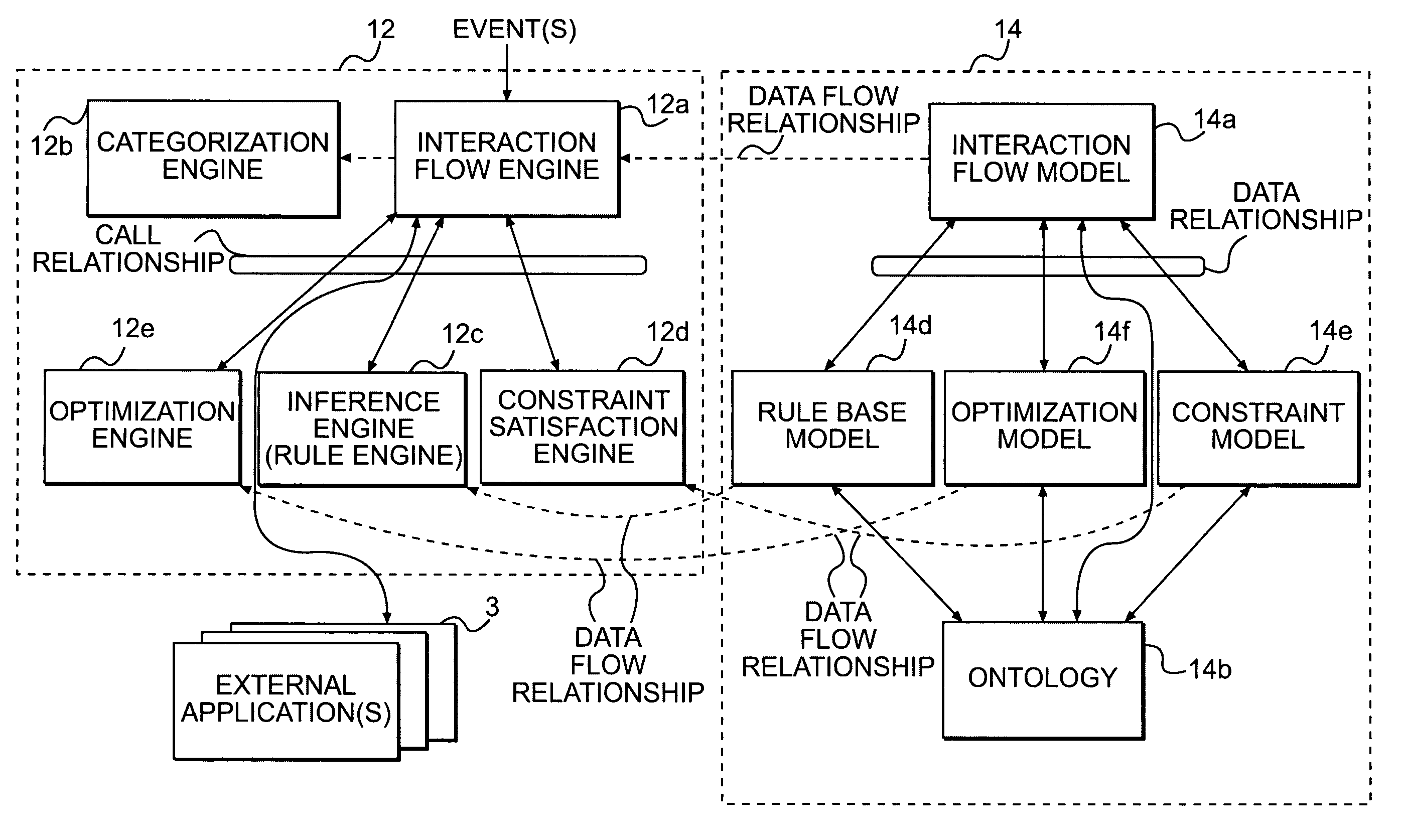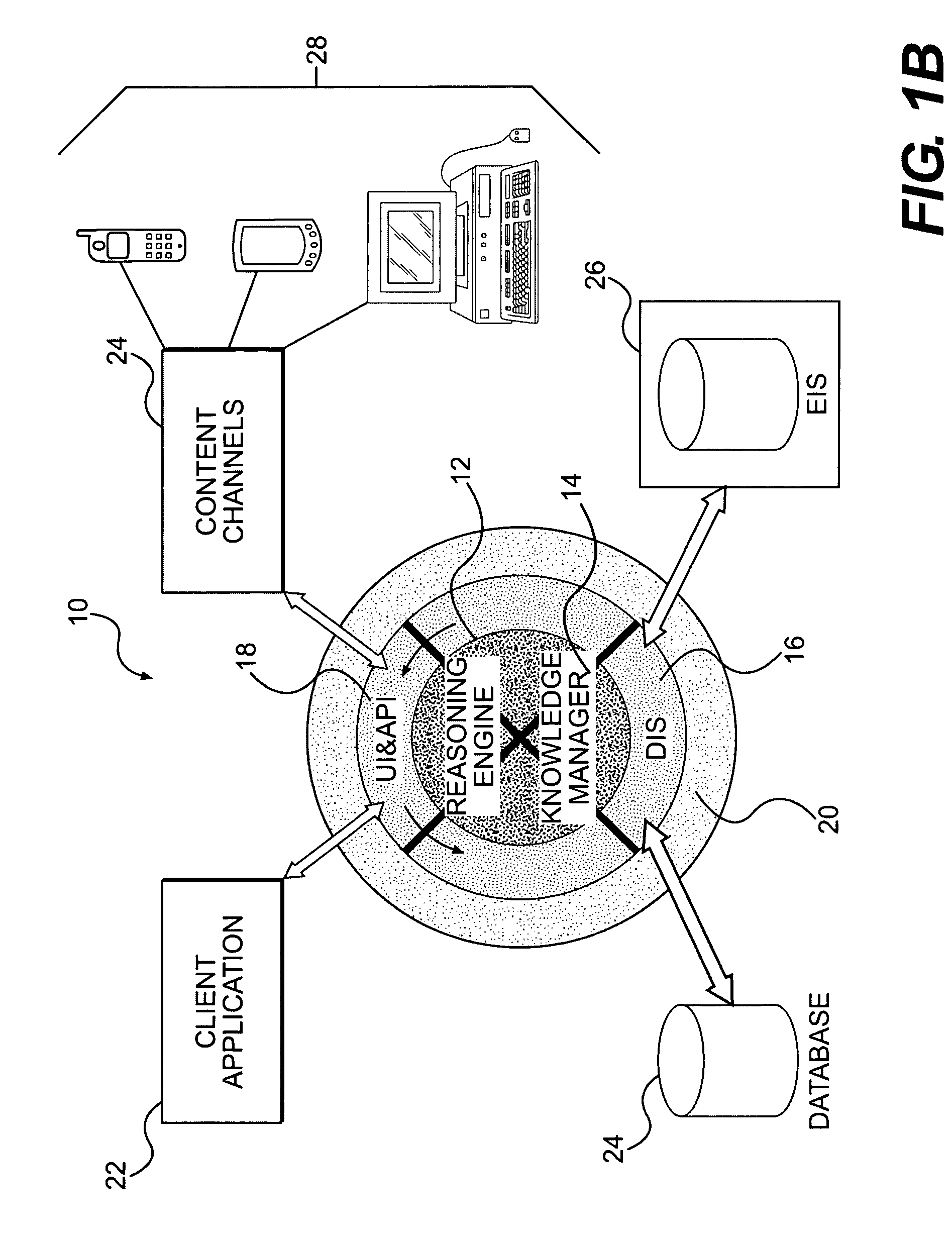Ontology-driven information system
an information system and information technology, applied in the computer field, can solve the problems of reducing the likelihood that the customer will act on the recommendation, many e-commerce systems do not enable companies to create meaningful, two-way interactions with customers, and many e-commerce systems do not help companies interact effectively with their customers on the web
- Summary
- Abstract
- Description
- Claims
- Application Information
AI Technical Summary
Benefits of technology
Problems solved by technology
Method used
Image
Examples
Embodiment Construction
[0032]Several exemplary embodiments of the invention will now be described in detail with reference to the accompanying drawings.
[0033]FIG. 1A is a schematic diagram 2 illustrating the functionality of an ontology-driven information system in accordance with one embodiment of the invention. As shown therein, Knowledge Broker™ ontology-driven information system 10 receives data from disparate sources including, by way of example, the World Wide Web (“the web”) 3, mainframe computer 4, relational database management system (RDBMS) 5, and live wire feeds 6. Information system 10 combines the disparate data with business rules 7, which may be formulated by business managers 8, and intelligence to produce personalized product and service recommendations 9 for an end user, e.g., a customer, at the moment of interaction, i.e., in real time. Personalized product and service recommendations 9 may be transmitted to the end user via computing device 28, which is connected to a network. By way ...
PUM
 Login to View More
Login to View More Abstract
Description
Claims
Application Information
 Login to View More
Login to View More - R&D
- Intellectual Property
- Life Sciences
- Materials
- Tech Scout
- Unparalleled Data Quality
- Higher Quality Content
- 60% Fewer Hallucinations
Browse by: Latest US Patents, China's latest patents, Technical Efficacy Thesaurus, Application Domain, Technology Topic, Popular Technical Reports.
© 2025 PatSnap. All rights reserved.Legal|Privacy policy|Modern Slavery Act Transparency Statement|Sitemap|About US| Contact US: help@patsnap.com



